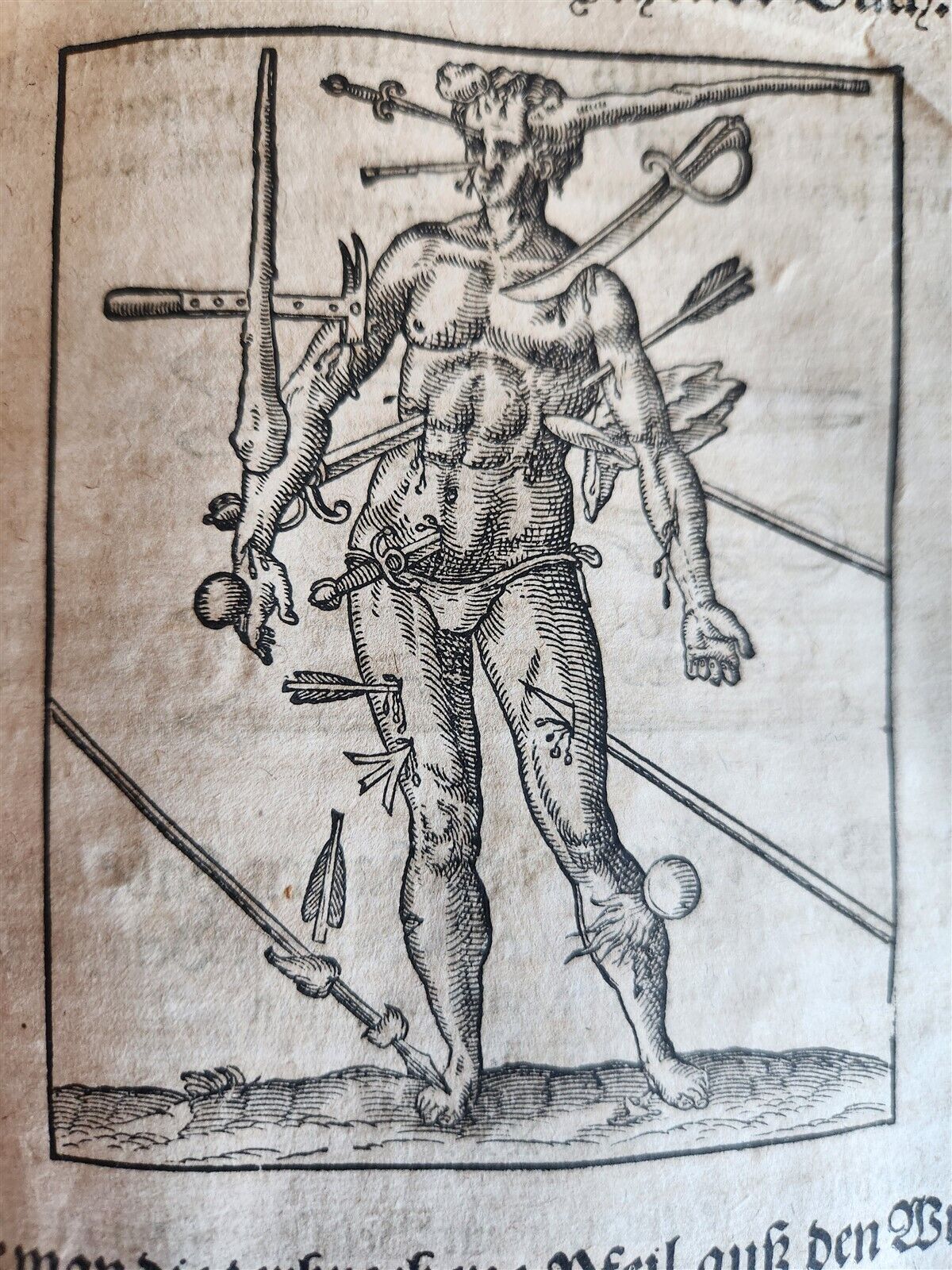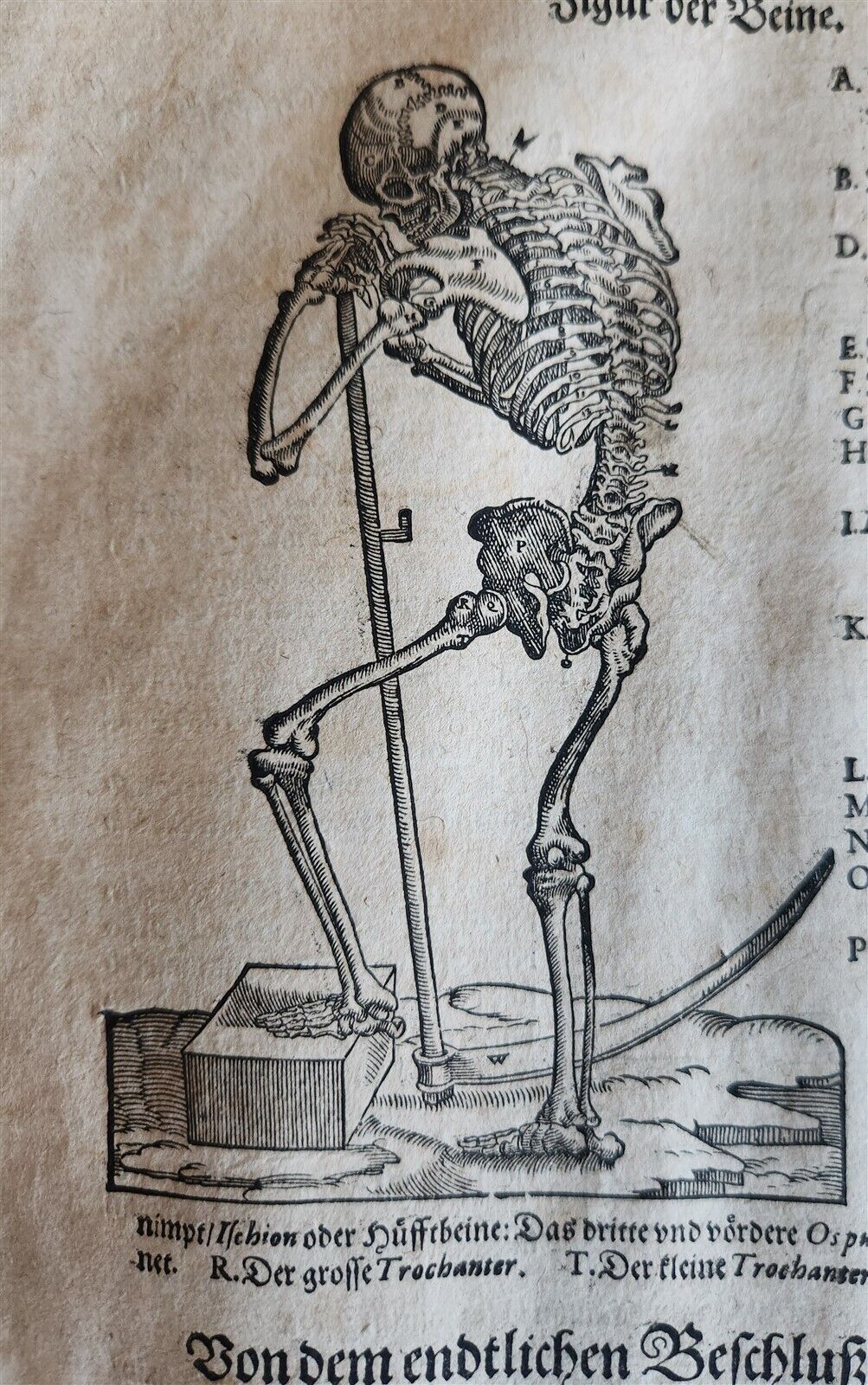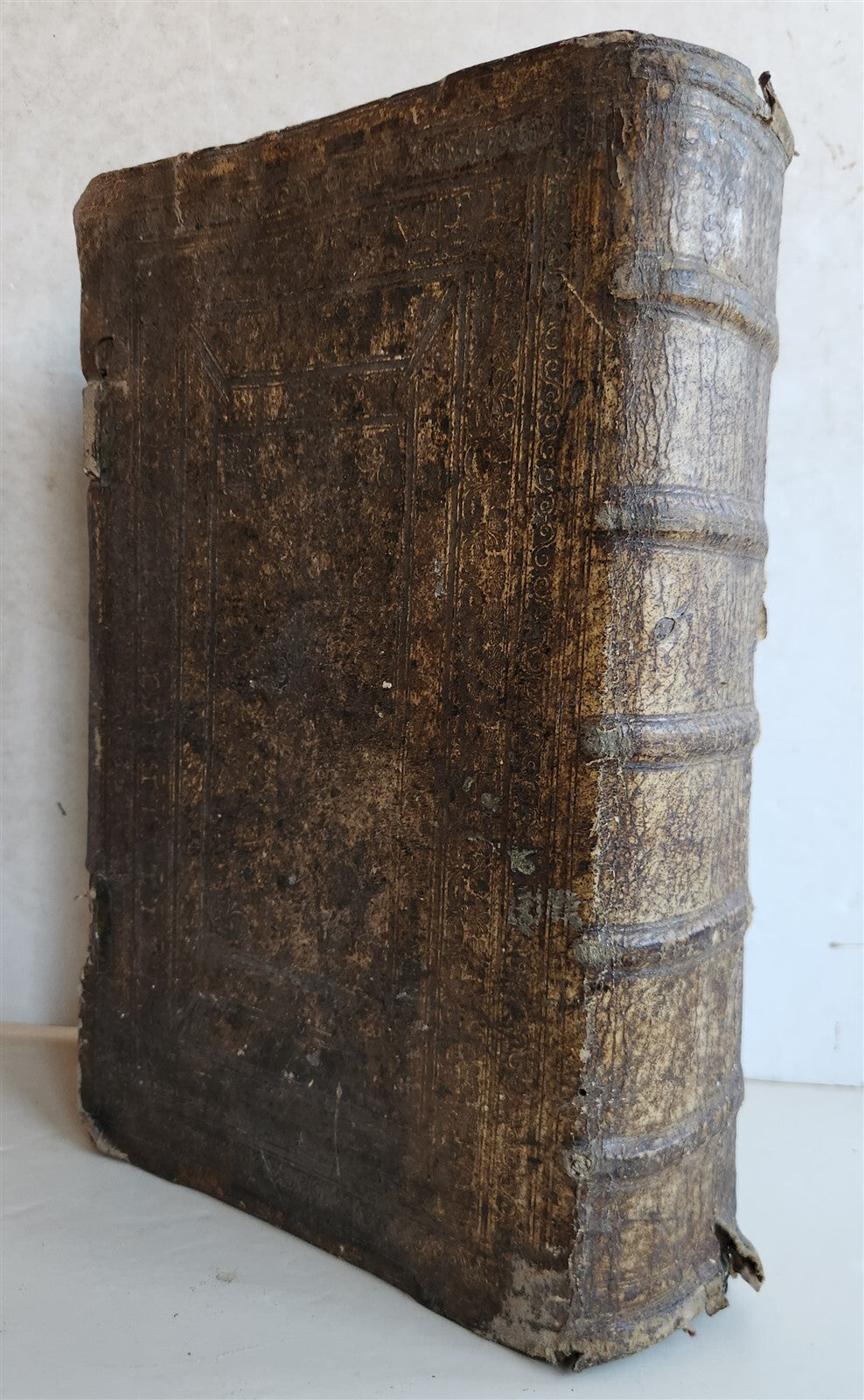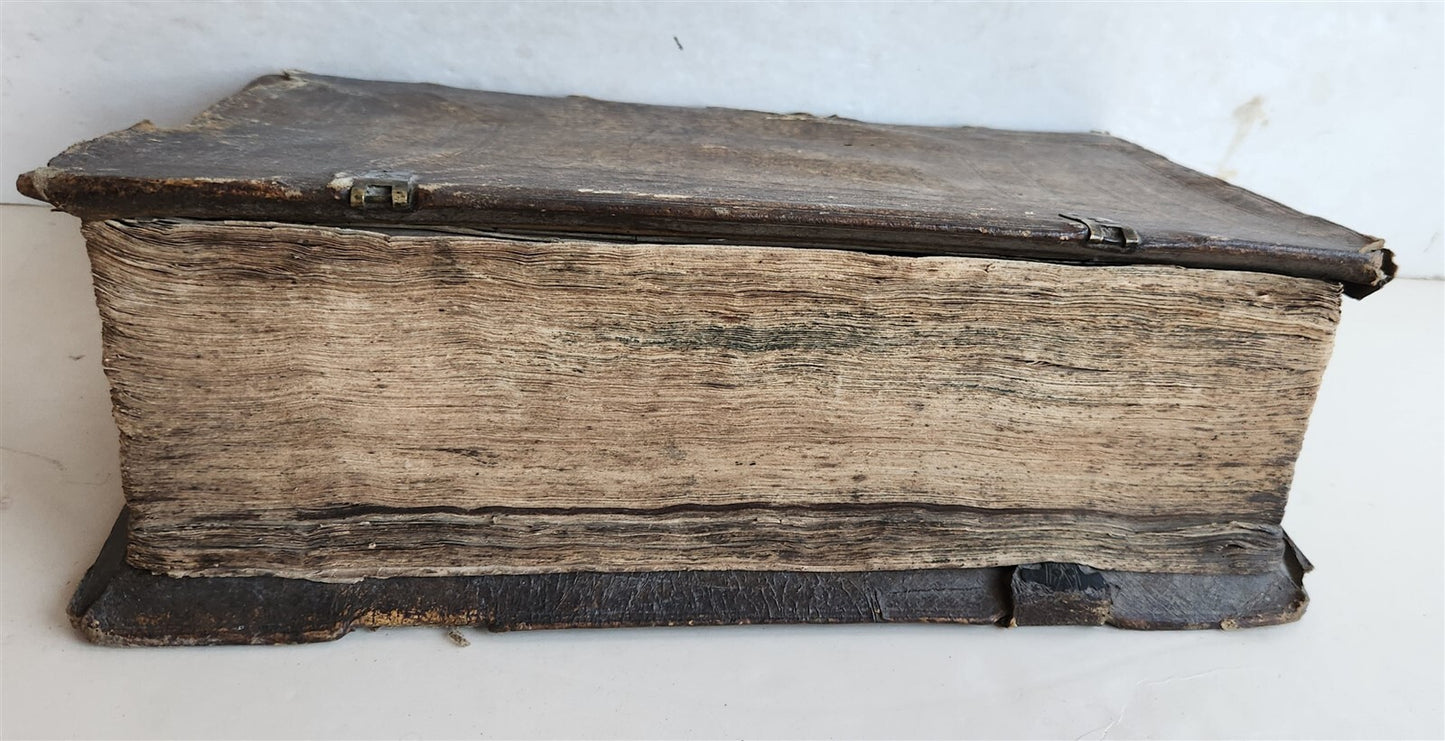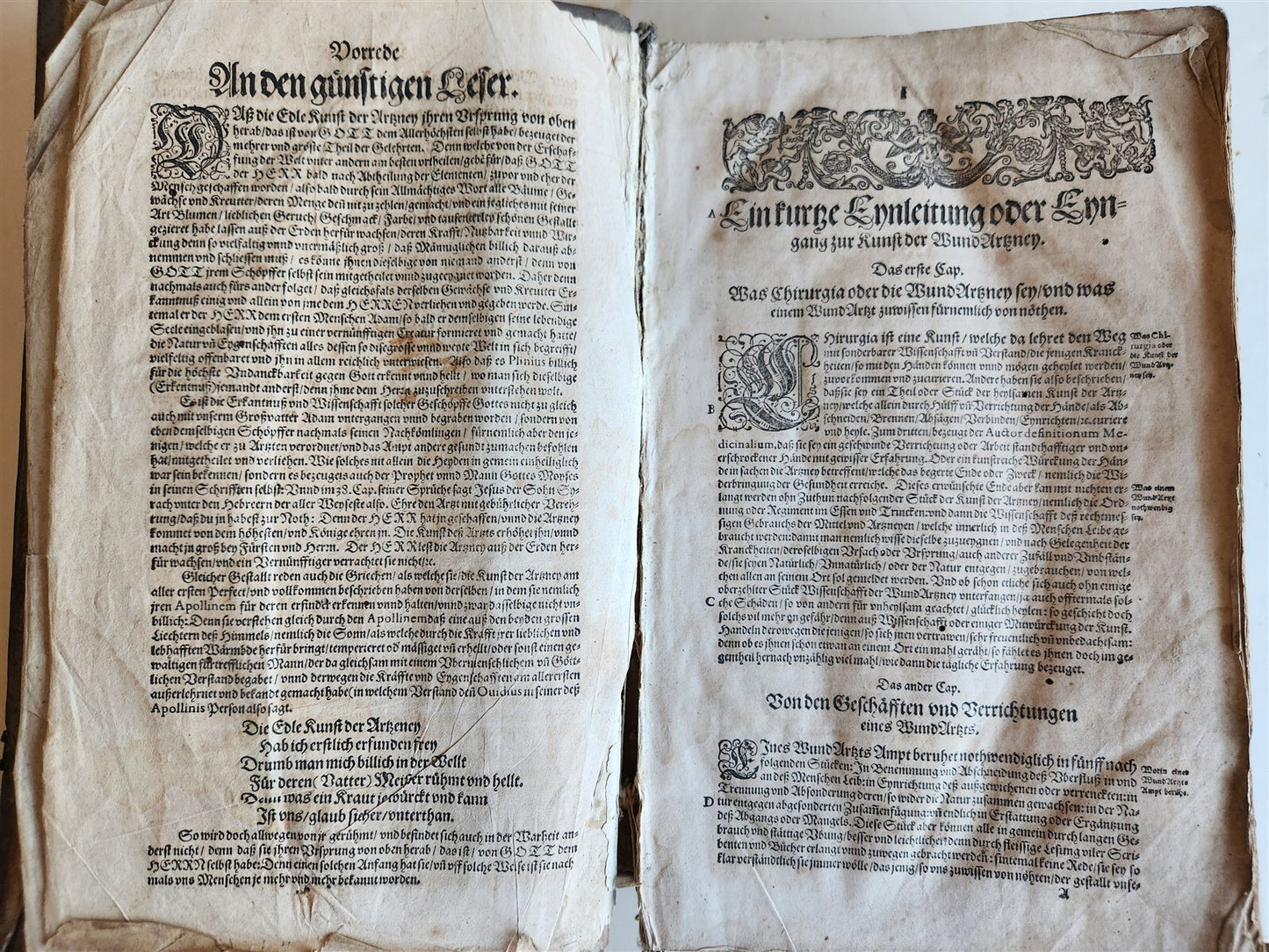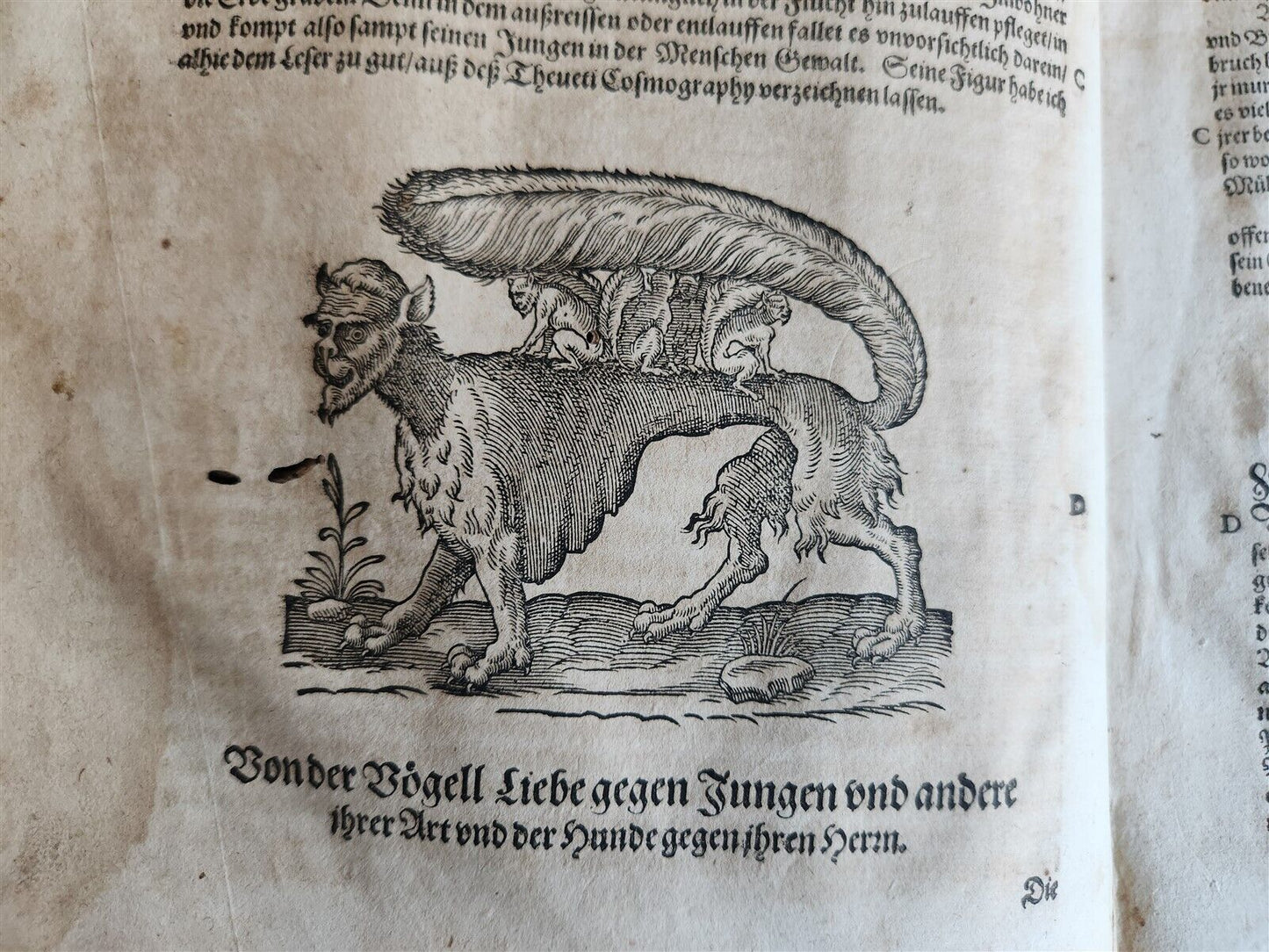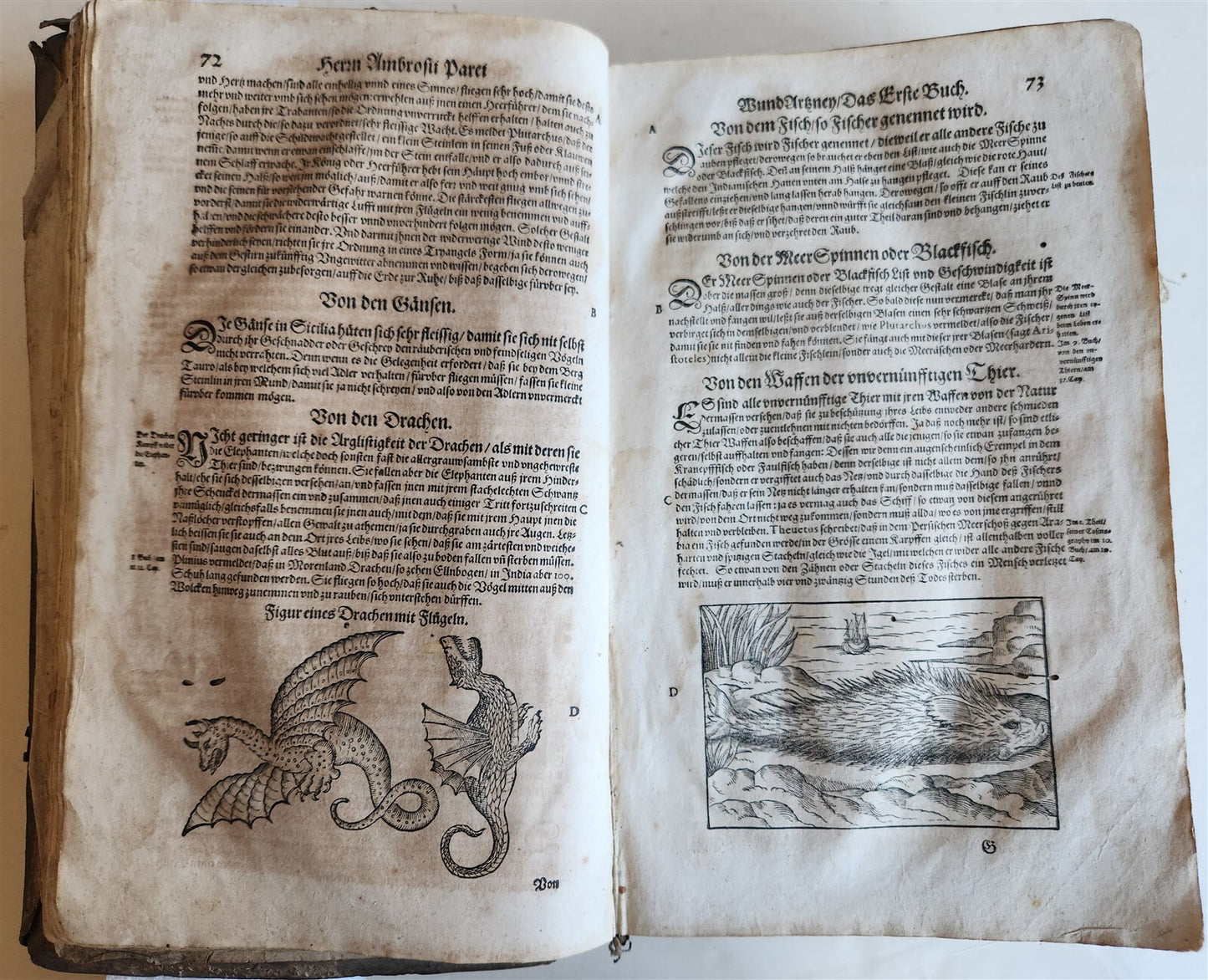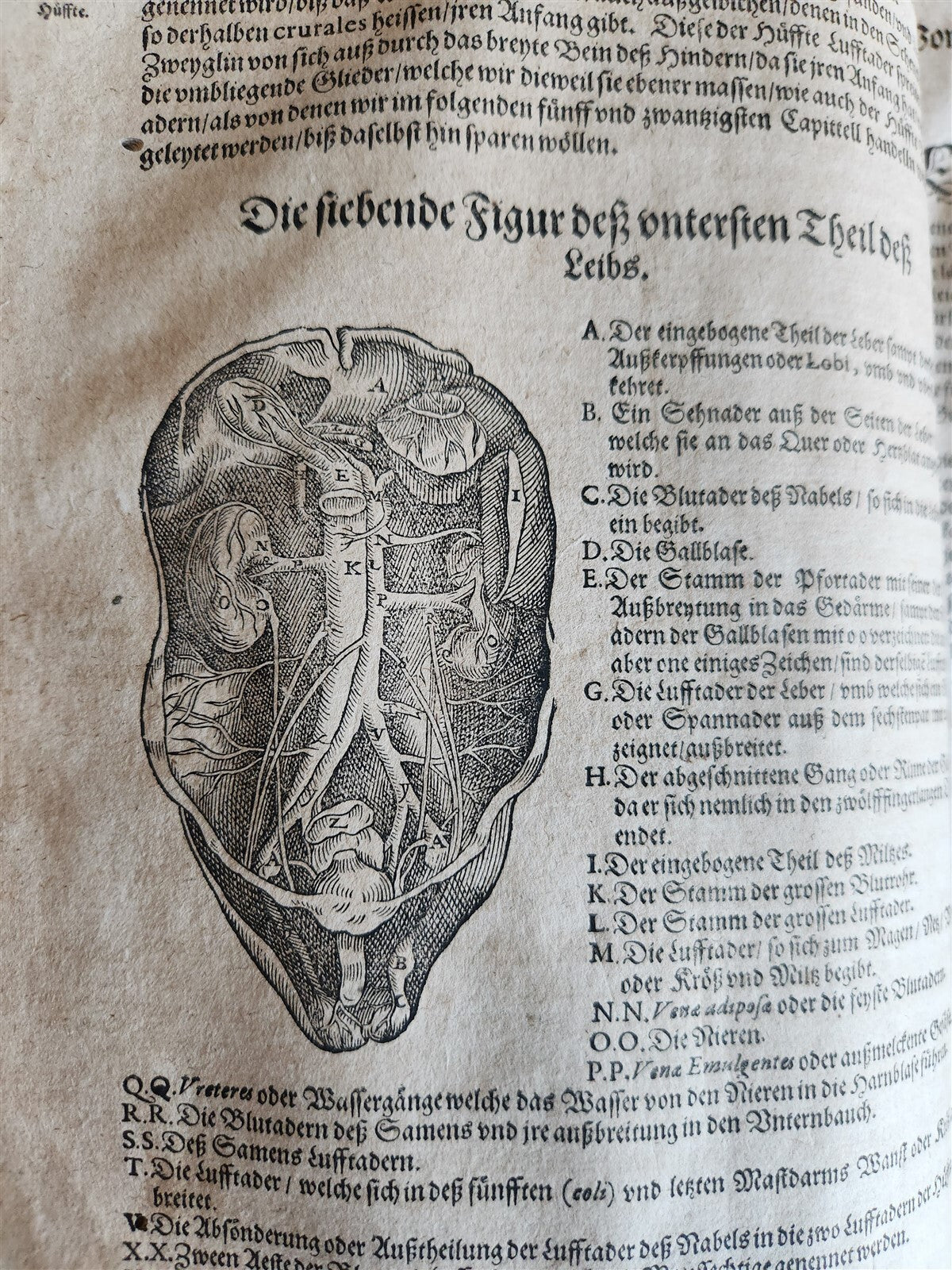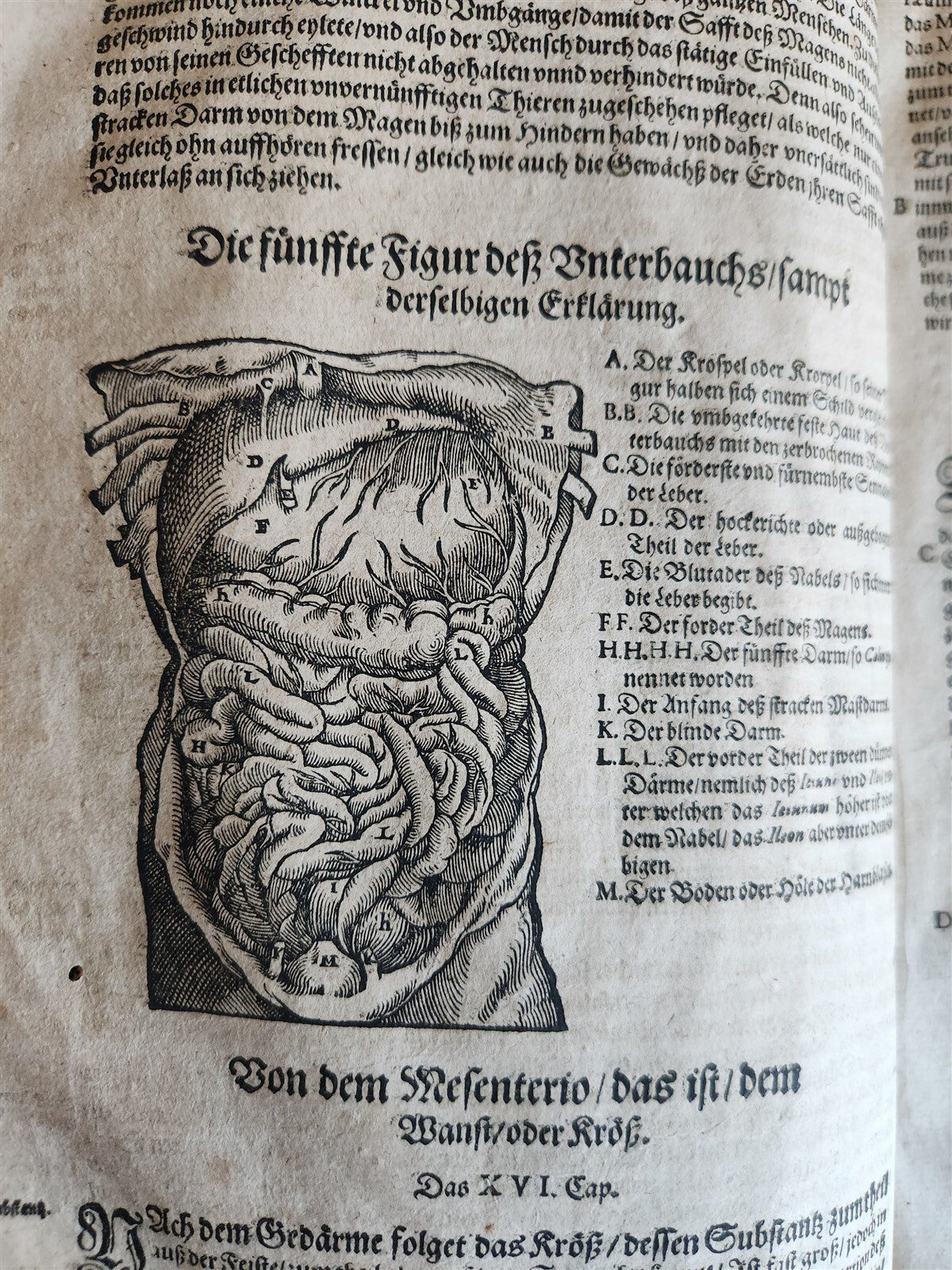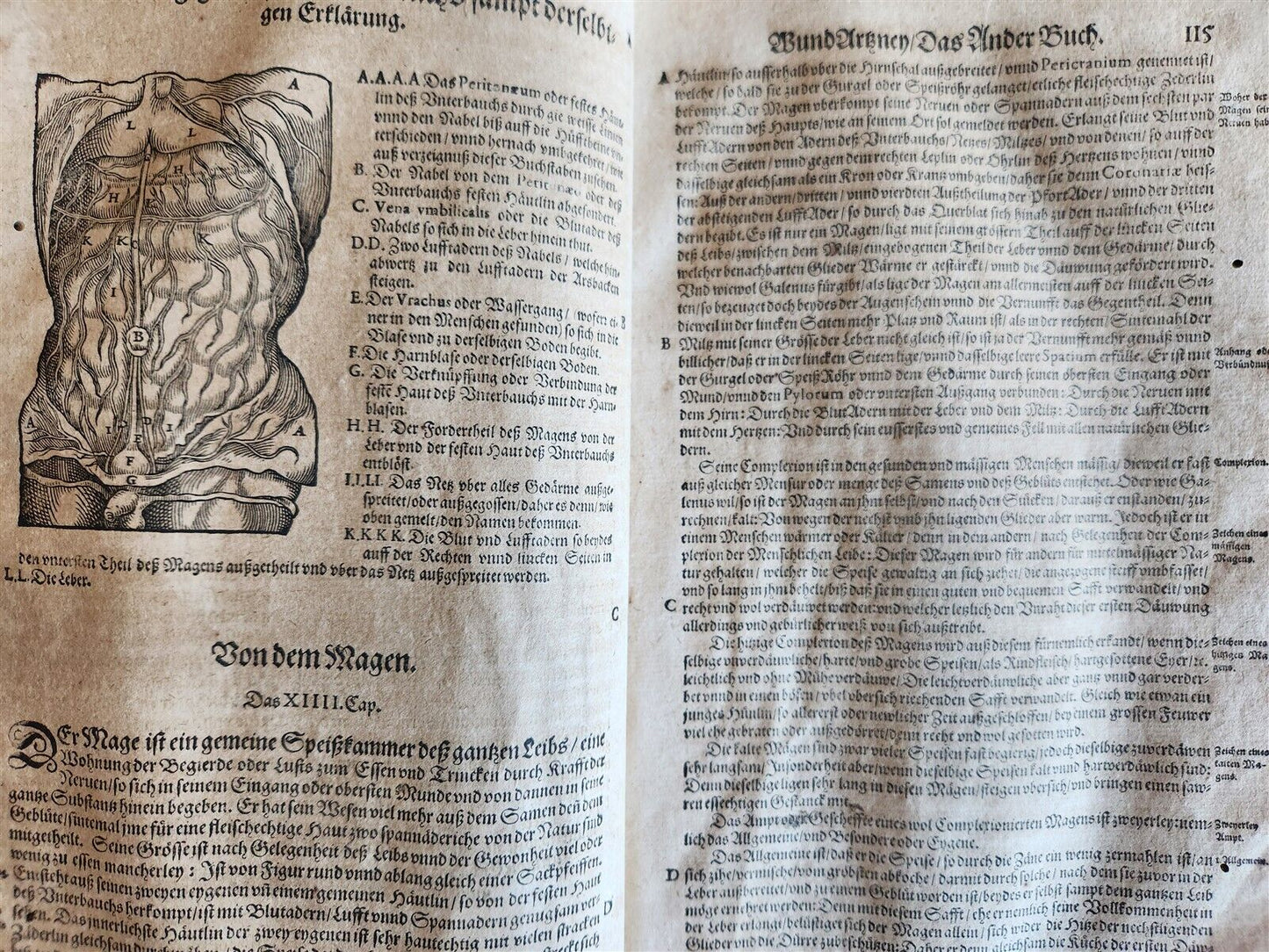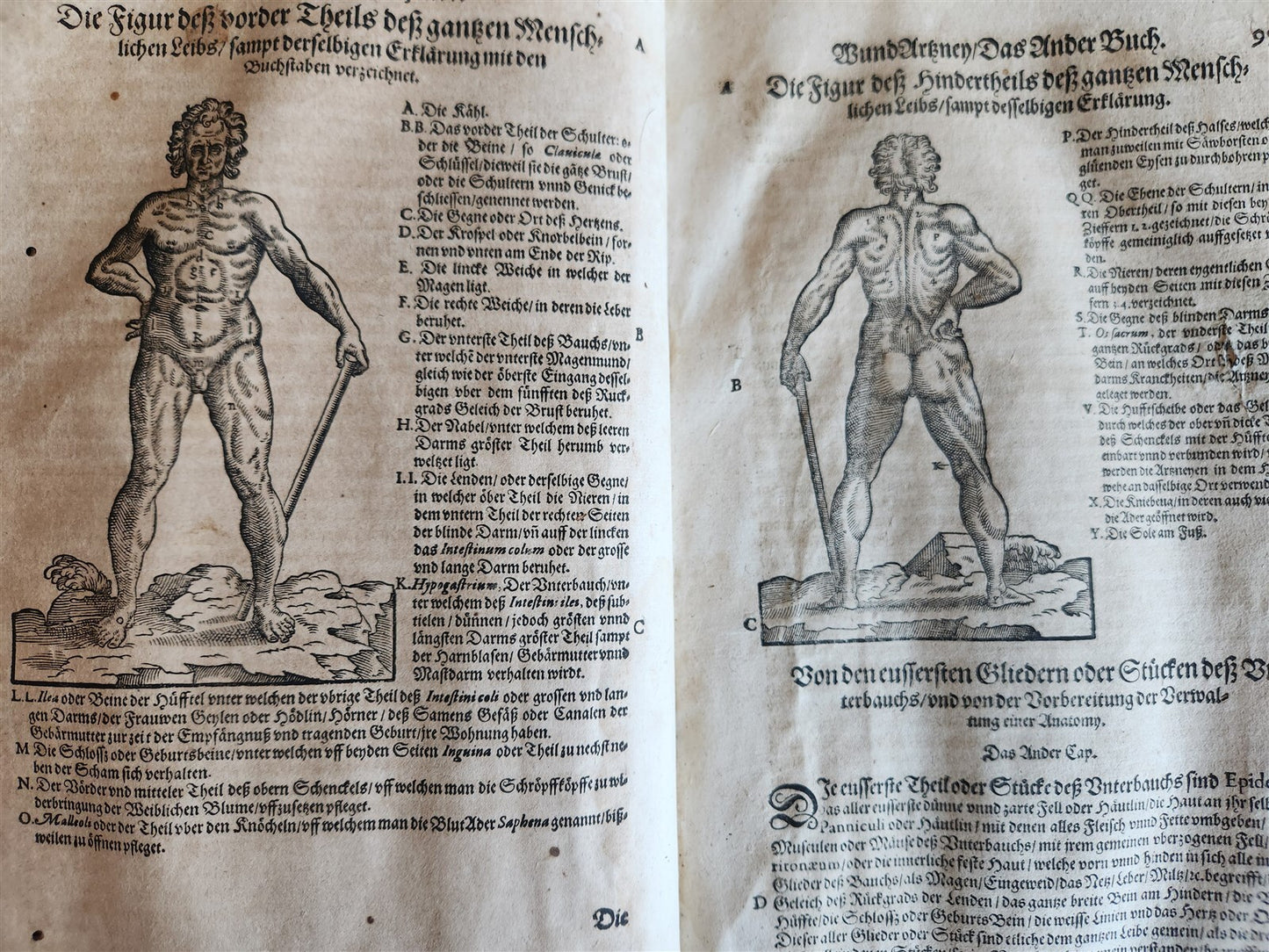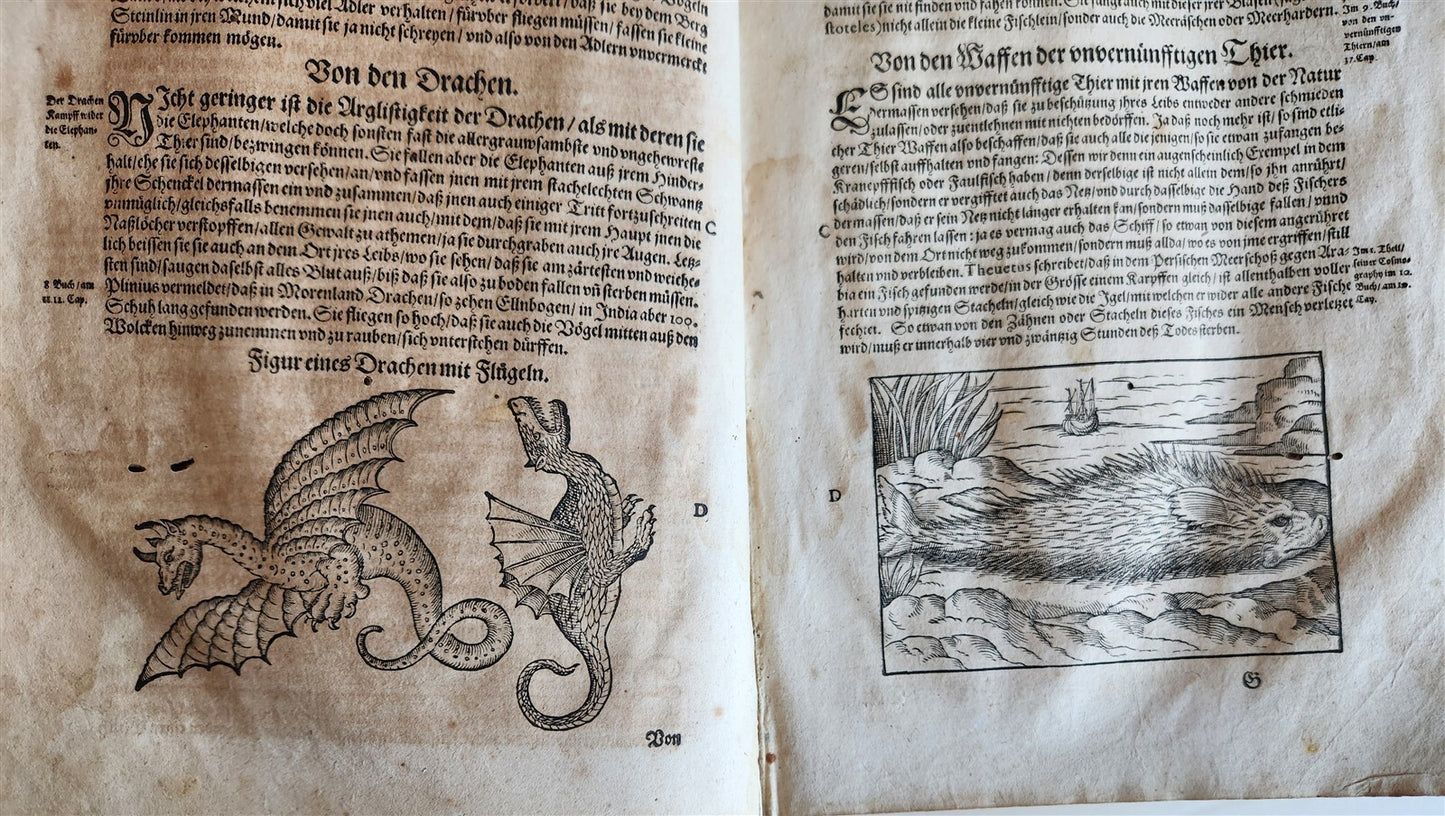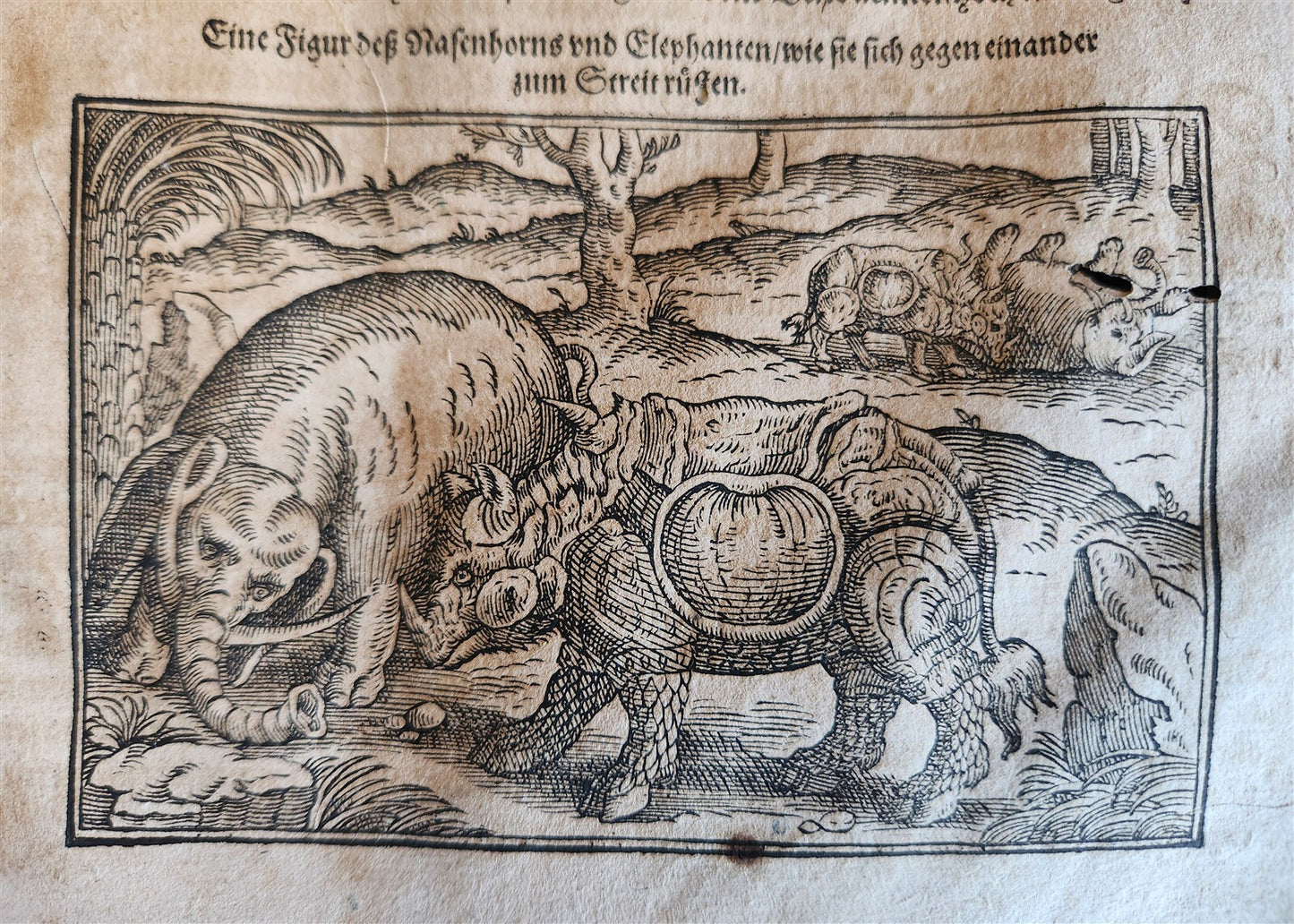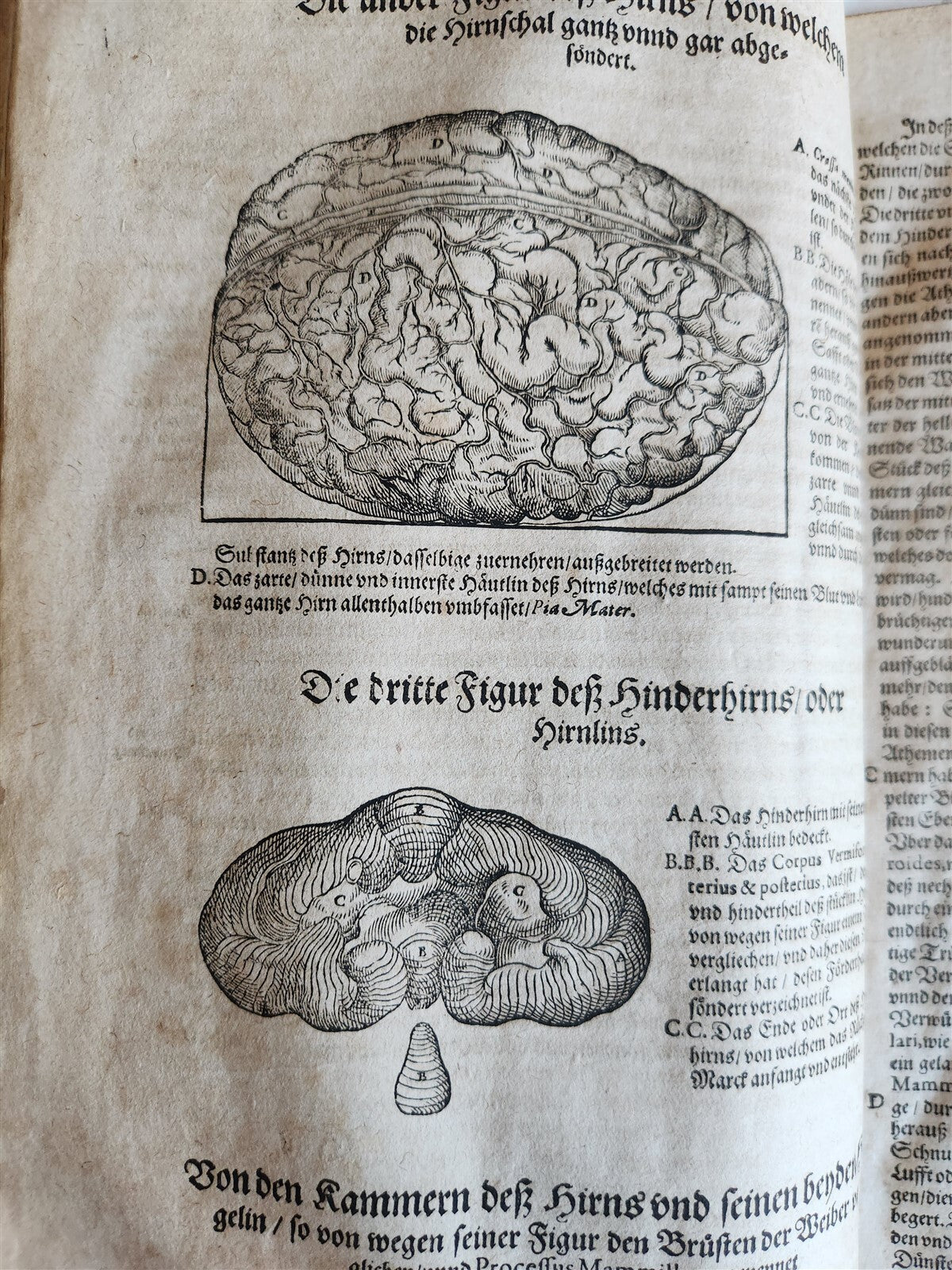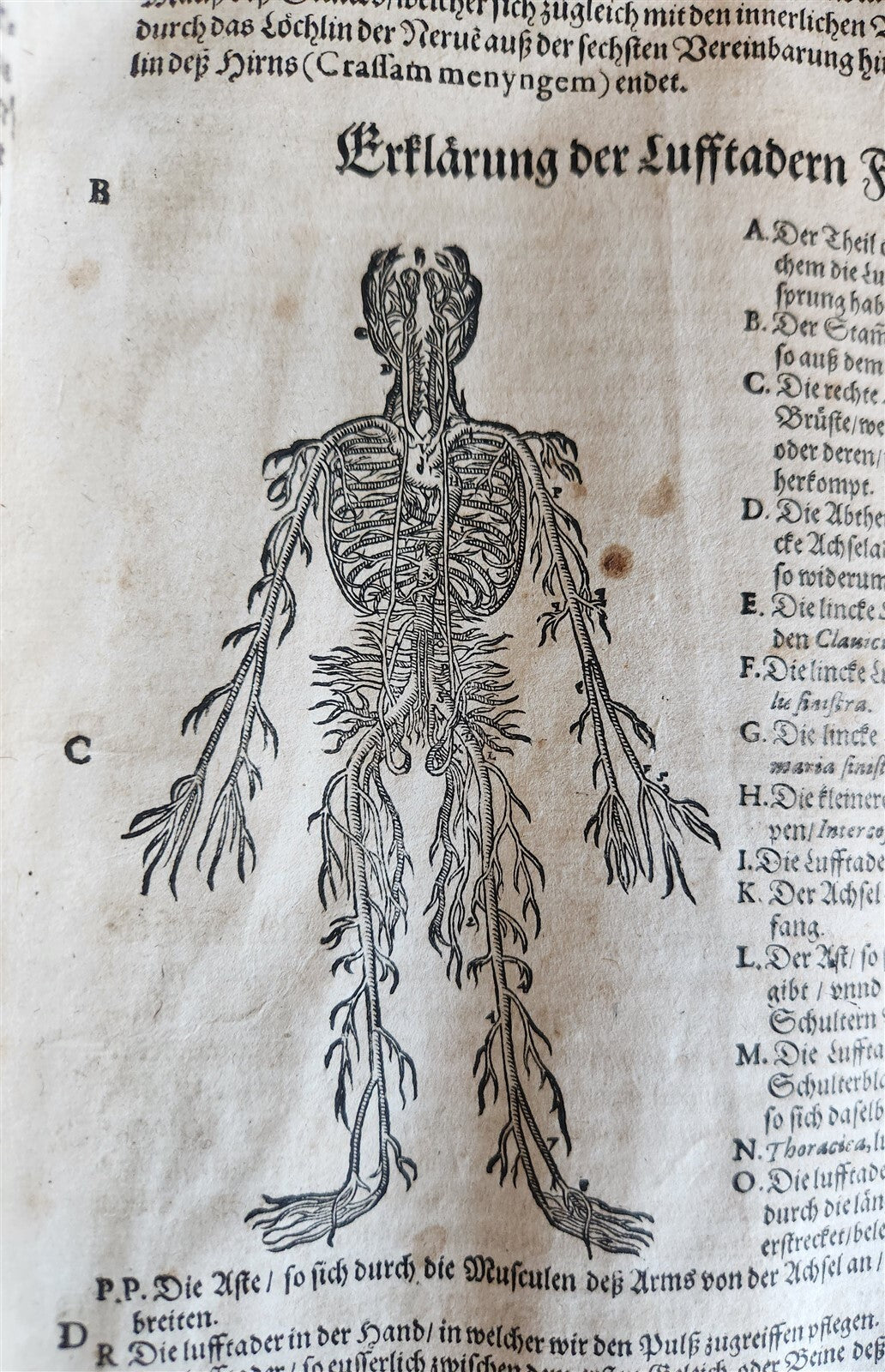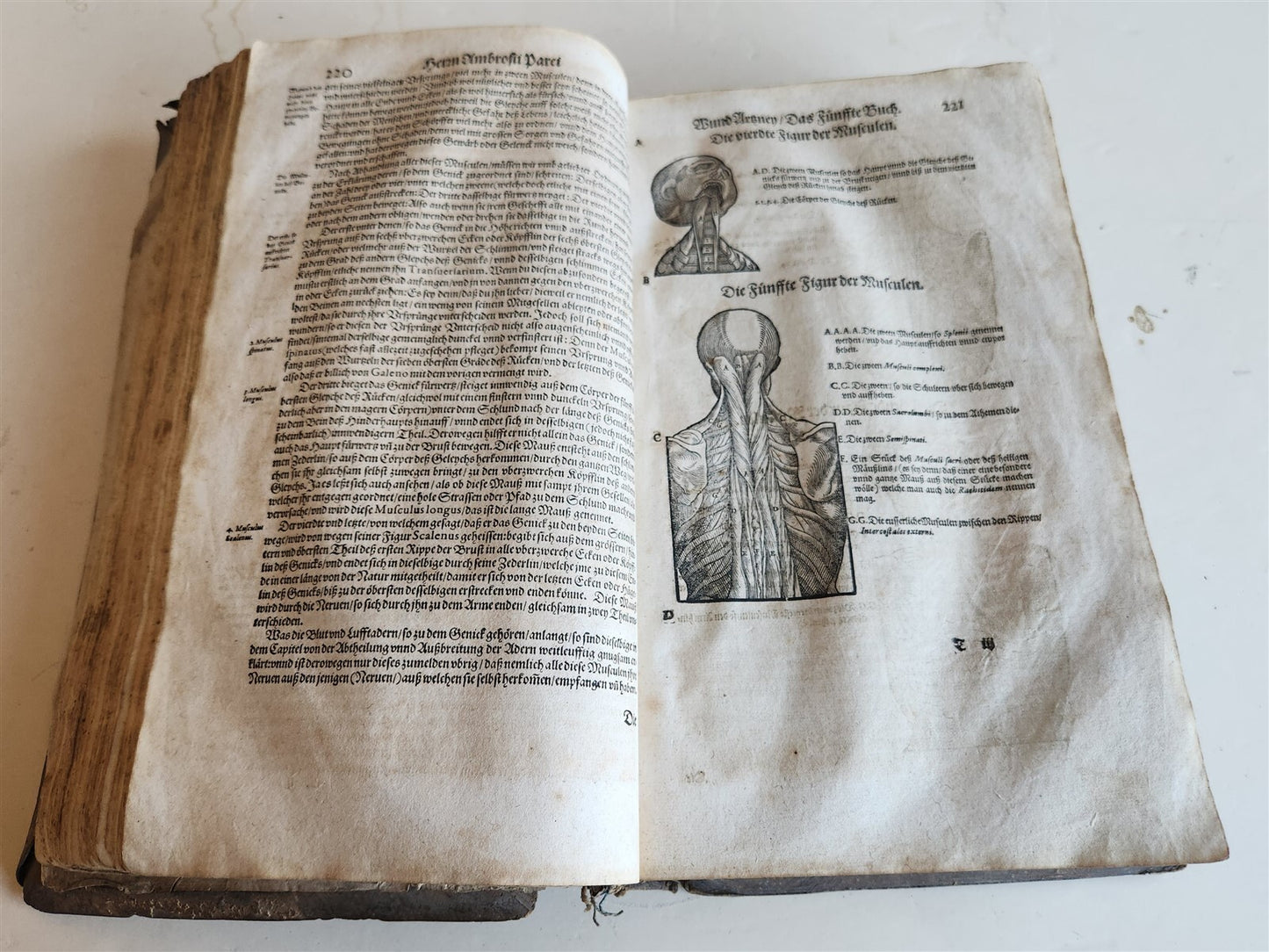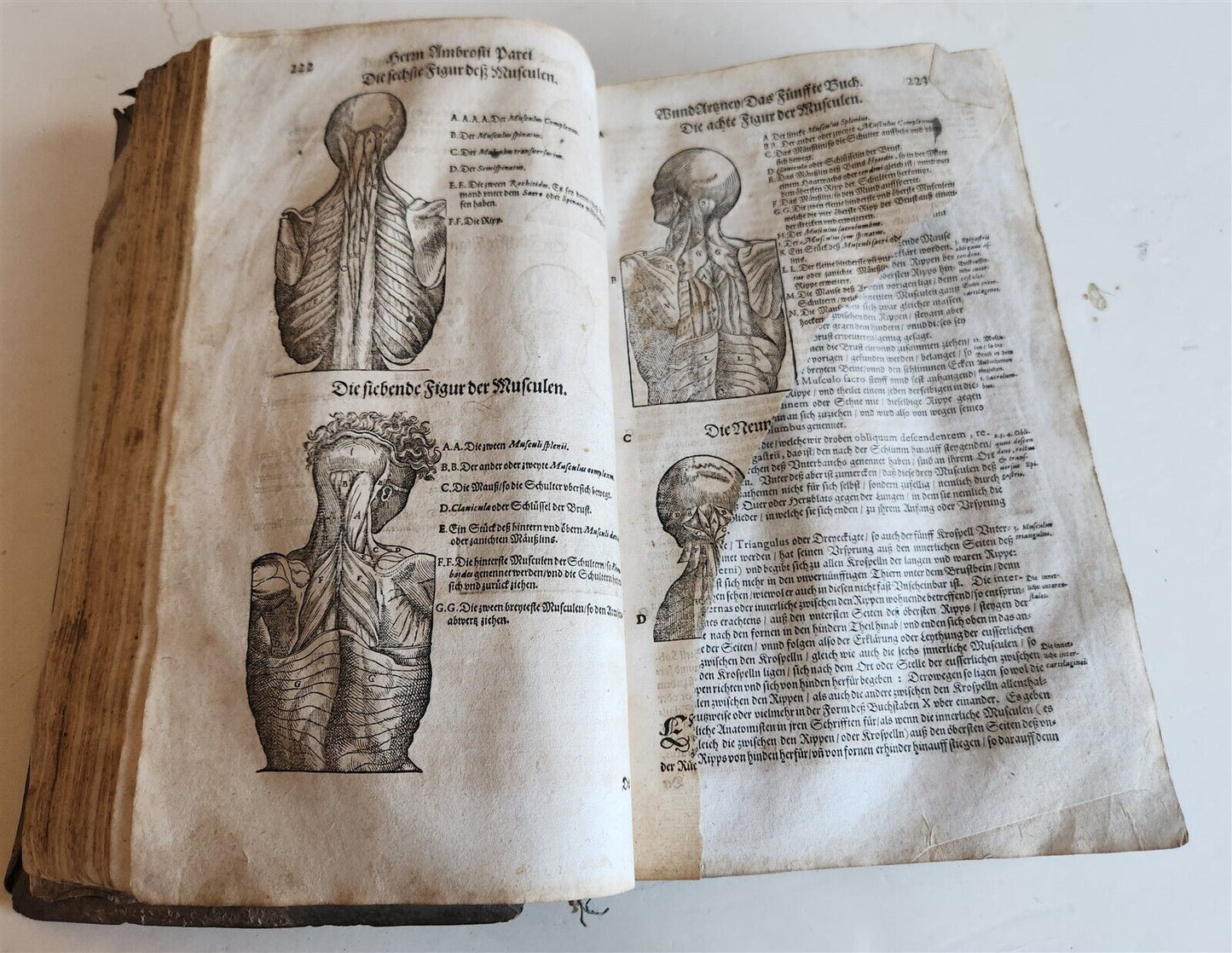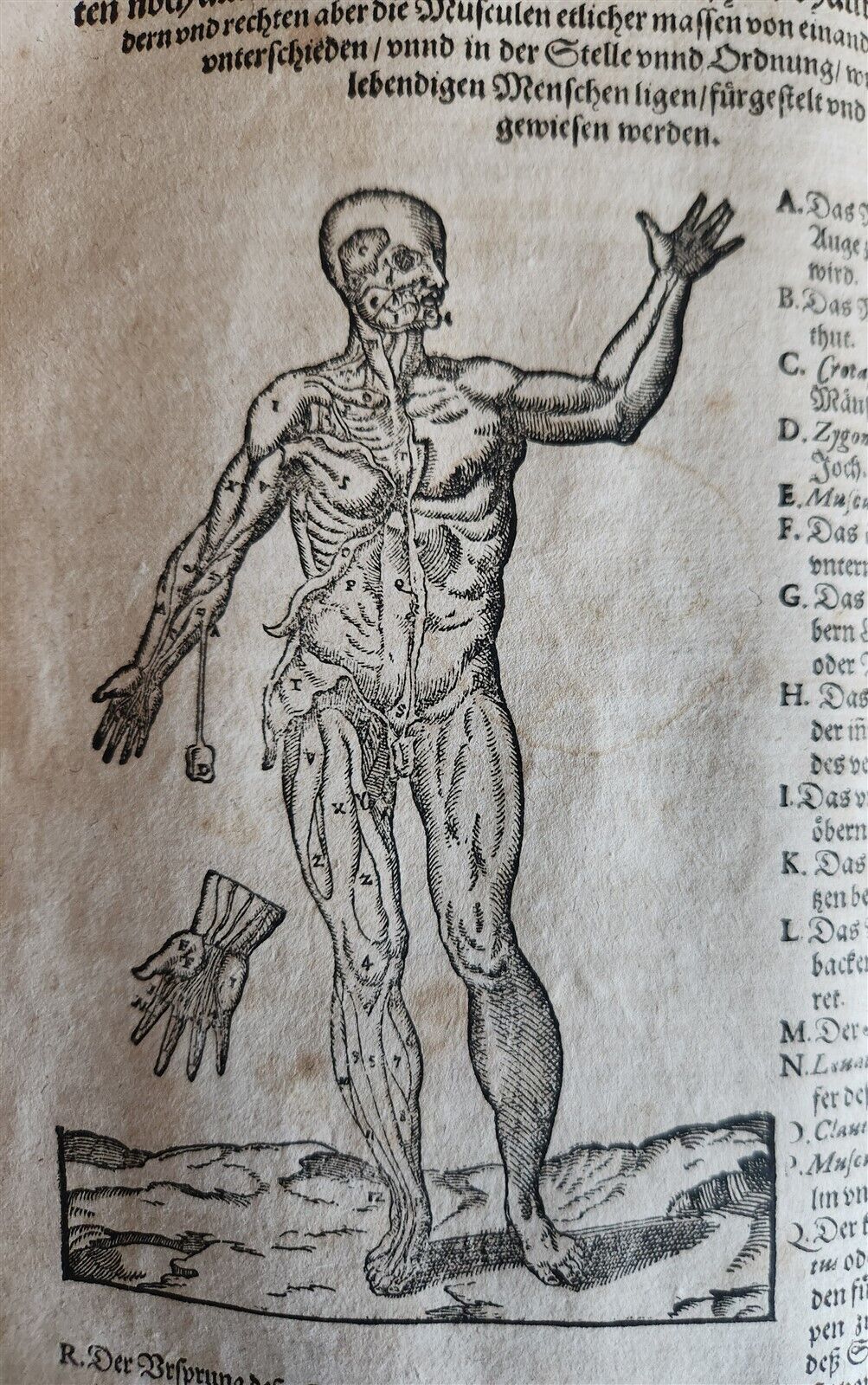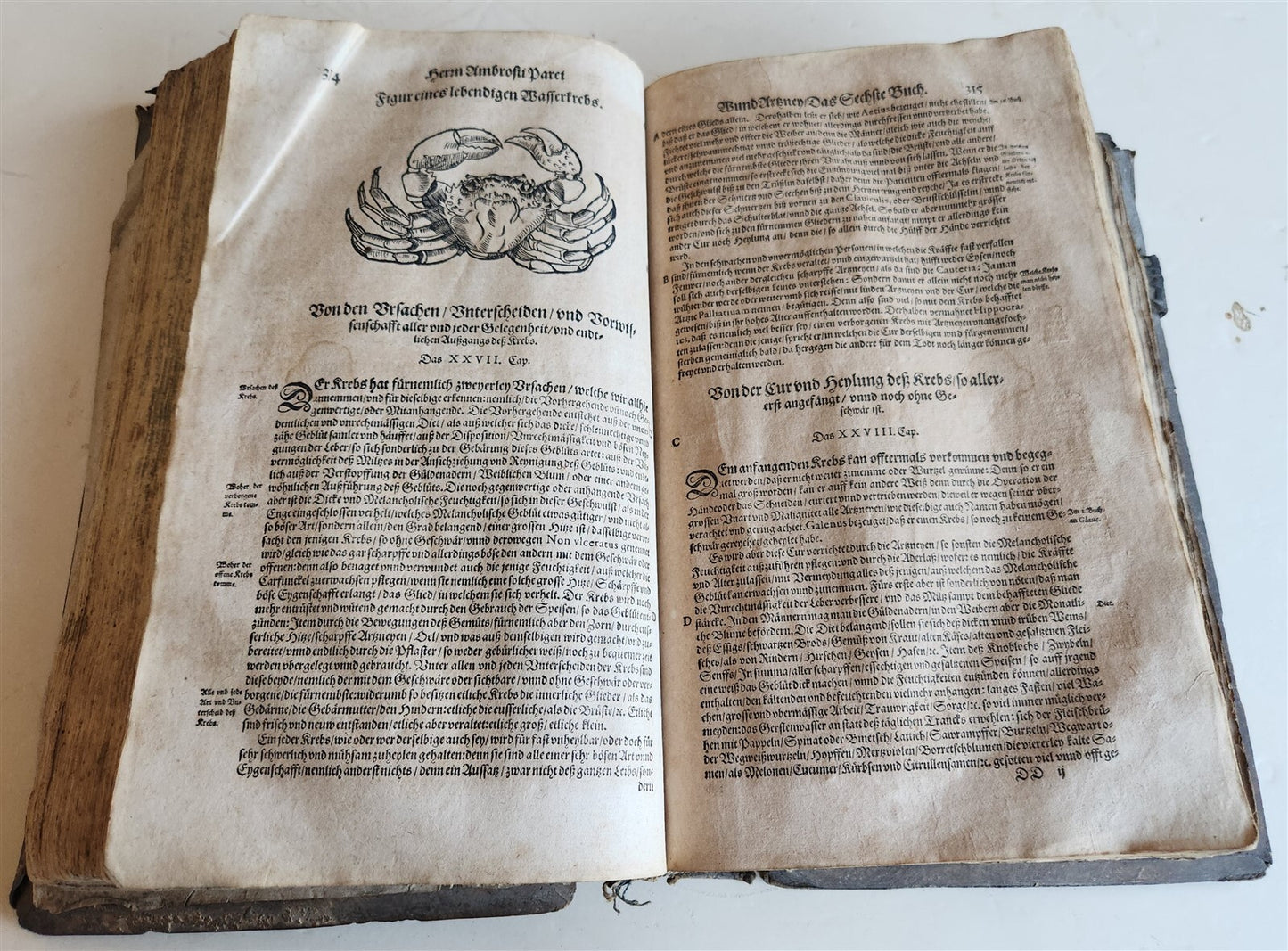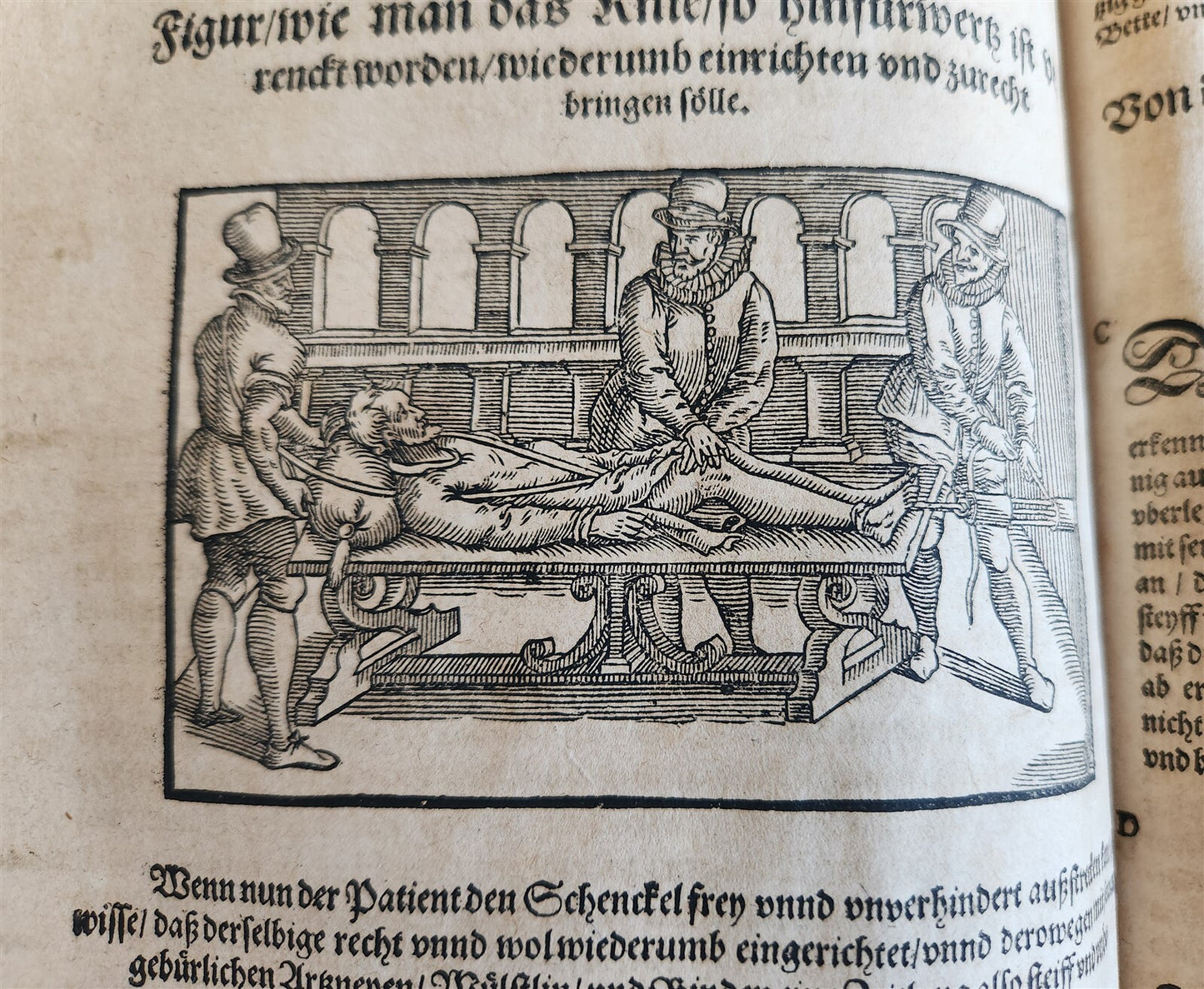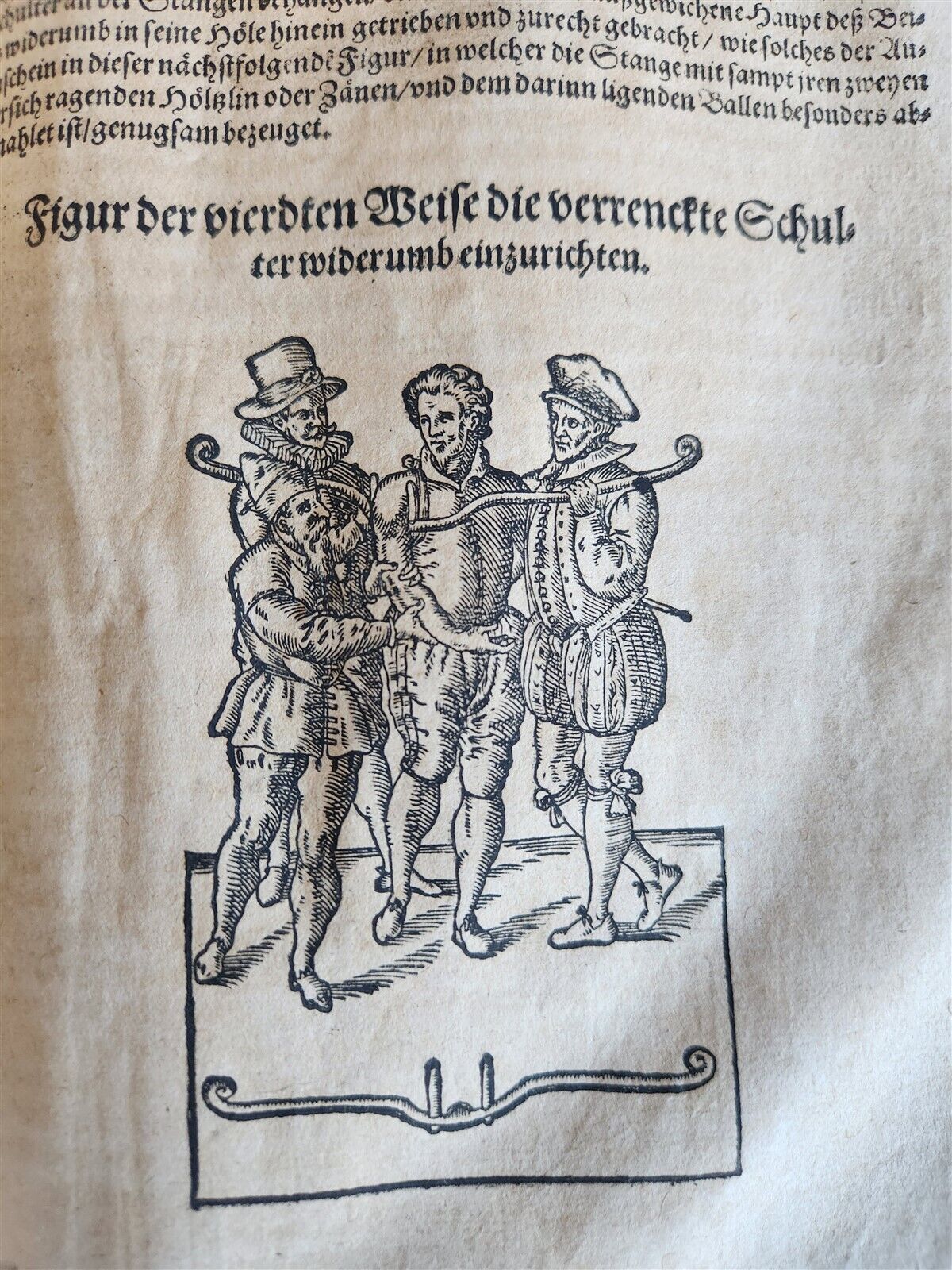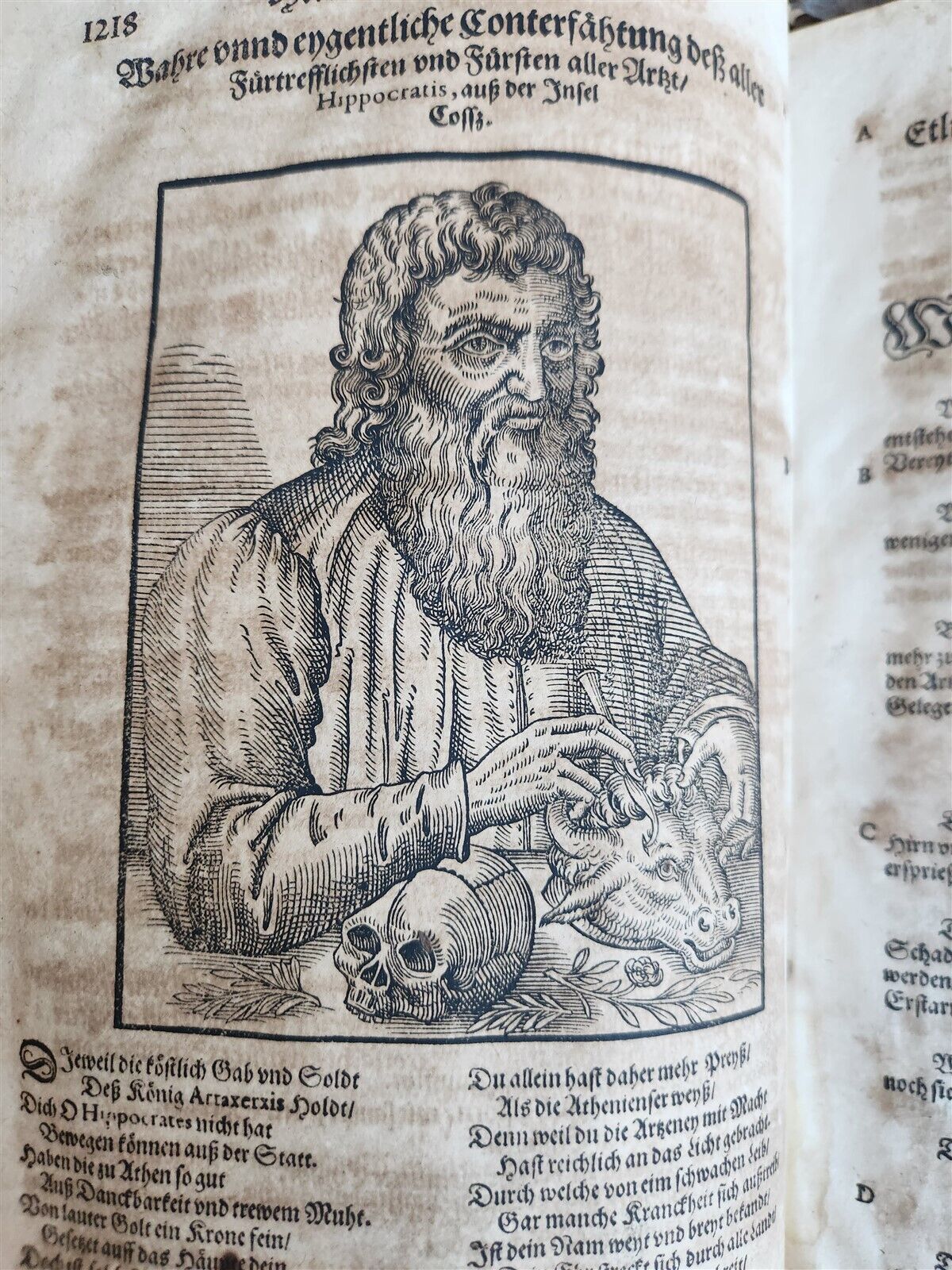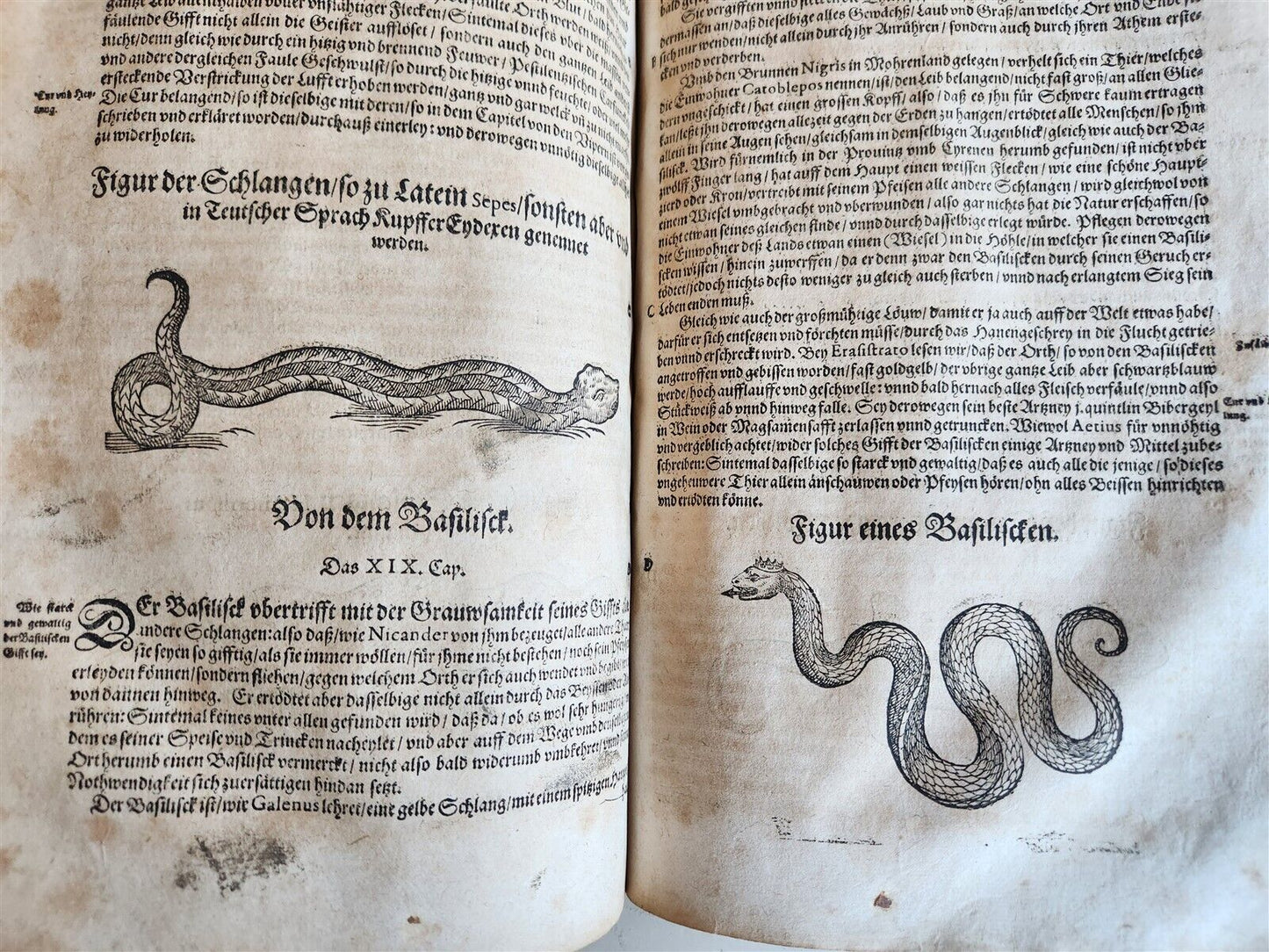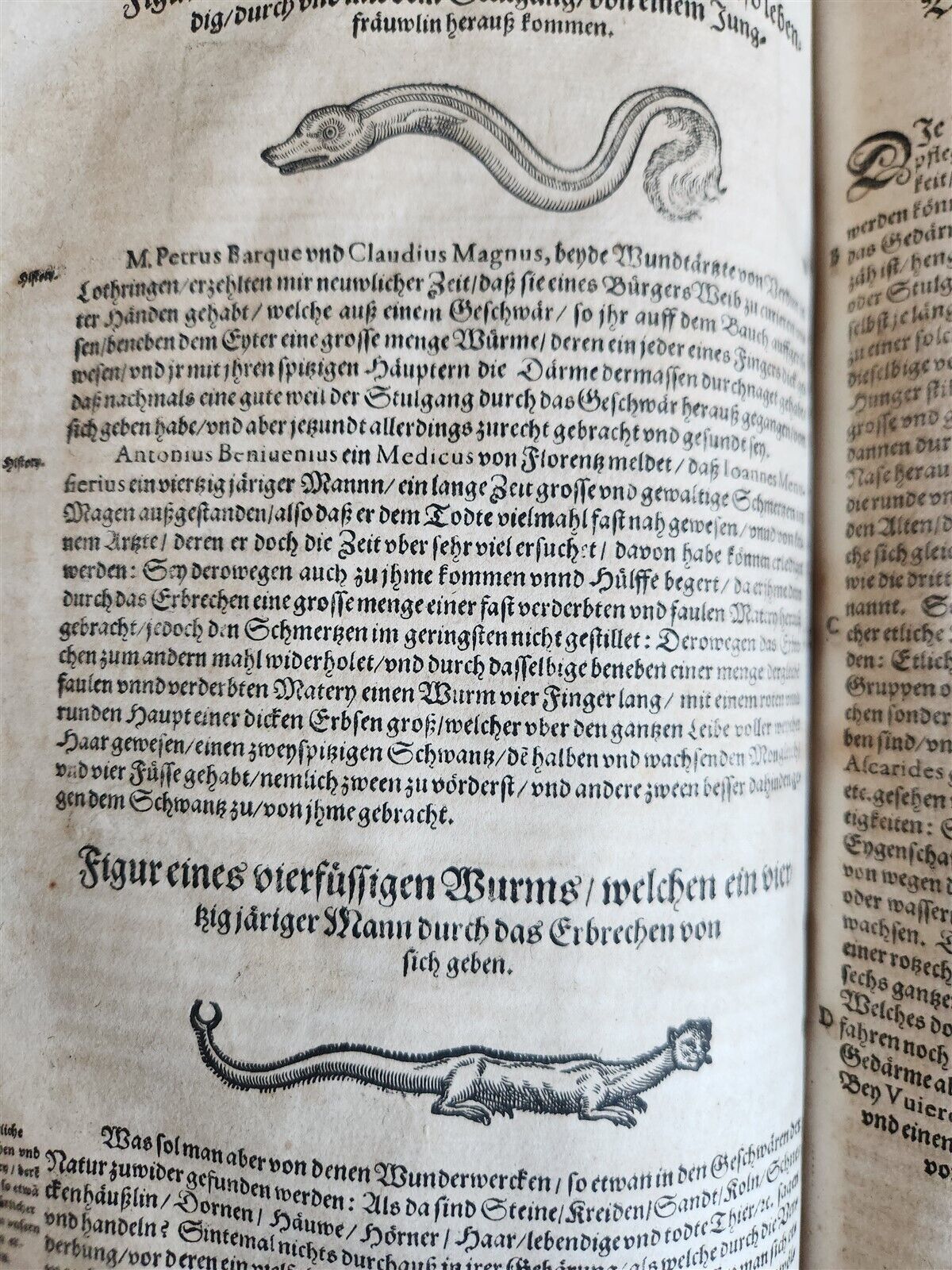Motka
1601 WOUND MEDICINE antique ILLUSTRATED WundArtzney oder Artzney spiegell FOLIO
1601 WOUND MEDICINE antique ILLUSTRATED WundArtzney oder Artzney spiegell FOLIO
Regular price
$1,899.10 USD
Regular price
$2,713.00 USD
Sale price
$1,899.10 USD
Unit price
per
Couldn't load pickup availability
Ambroise PareWundArtzney, oder Artzney spiegell. In welcher, beneben klarer und gnugsamer Anleytung zur Wund-Artzney, auch eygentlicher unnd vollkommener Anatomischer Beschreibung, aller Glieder, Bein, Mausslin und Adern deß Menschlichen Leibs... "Wound Medicine, or the Mirror of Medicine" In which, besides clear and sufficient instructions for wound treatment, also an actual and complete anatomical description of all limbs, legs, fingers and veins of the human body...) [Frankfurt, Palthenius fur Fischer Erben; 1601]Folio: 8 1/2 by 14"4" wideWith numerous text woodcuts and 1 folded table. LACKS TITLE2 (instead of 8) leaves, 1239 pages (without pages 1017-1122), 8 leaves.Original blind-stamped pigskin over wooden boards. Lacks clasps and endpapers, wear, toning, occasional stains, page 223 and 959 with missing parts, a few loose leaves- Doe, Pare 56. Hirsch-H. IV, 503-First German editionThe woodcuts mostly show medical instruments (some of which Pare invented), but also anatomical illustrations, deformities, monsters, and some zoological depictions, taken from the Latin edition of the "Opera" (Frankfurt 1594). Text in German================================Ambroise Pare (c.?1510 – 1590) was a French barber surgeon who served in that role for kings Henry II, Francis II, Charles IX and Henry III. He is considered one of the fathers of surgery and modern forensic pathology and a pioneer in surgical techniques and battlefield medicine, especially in the treatment of wounds. He was also an anatomist, invented several surgical instruments, and was a member of the Parisian barber surgeon guild.In his personal notes about the care he delivered to Captain Rat, in the Piemont campaign (1537–1538), Pare wrote: Je le pansai, Dieu le guerit ("I bandaged him and God healed him"). This epitomises a philosophy that he used throughout his career.These words, inscribed on his statue in Laval, are reminiscent of the Latin adage medicus curat, natura sanat, "The physician cures, nature heals".==================================Please see my other auctions Thank You
Refund Policy: We will issue a FULL REFUND, 100% money back if you are not satisfied with your purchase. Items must be returned to us within 20 days in order to receive a refund or replacement. Buyer is responsible for shipping costs.
------------------------------------------------------------------------------------------------------------------------------------------------------------------------------------------------------------------------------------------------------------------------------------------------------------------------------------------------------------------------------------------------------------------------------------------------------------------------------------------------------------------------------------------------------------------------------------------------------------------------------------------------------------------------------------------------------------------------------------------------------------------------------------------------------------------------------------------------------------------------------------------------------------------------------------------------------------------------------------------------------------------------------------------------------------------------------------------------------------------------------------------------------------------------------------------------------------------------------------------------------------------------------------------------------------------------------------------------------------------------------------------------------------------------------------------------------------------------------------------------------------------------------------------------------------------------------------------------------------------------------------------------------------------------------------------------------------------------------------------------------------------------------------------------------------------------------------------------------------------------------------------------------------------------------------------------------------------------------------------------------------------------------------------------------------------------------------------------------------------------------------------------------------------------------------------------------------------------------------------------------------------------------------------------------------------------------------------------------------------------------------------------------------------------------------
Ambroise Pare
WundArtzney, oder Artzney spiegell.
In welcher, beneben klarer und gnugsamer Anleytung zur Wund-Artzney, auch eygentlicher unnd vollkommener Anatomischer Beschreibung, aller Glieder, Bein, Mausslin und Adern deß Menschlichen Leibs...
"Wound Medicine, or the Mirror of Medicine"
In which, besides clear and sufficient instructions for wound treatment, also an actual and complete anatomical description of all limbs, legs, fingers and veins of the human body...)
[Frankfurt, Palthenius fur Fischer Erben; 1601]
Folio: 8 1/2 by 14"
4" wide
With numerous text woodcuts and 1 folded table.
LACKS TITLE
2 (instead of 8) leaves, 1239 pages (without pages 1017-1122), 8 leaves.
Original blind-stamped pigskin over wooden boards.
Lacks clasps and endpapers, wear, toning, occasional stains, page 223 and 959 with missing parts, a few loose leaves
- Doe, Pare 56. Hirsch-H. IV, 503-
First German edition
The woodcuts mostly show medical instruments (some of which Pare invented), but also anatomical illustrations, deformities, monsters, and some zoological depictions, taken from the Latin edition of the "Opera" (Frankfurt 1594).
Text in German
================================
Ambroise Pare (c.?1510 – 1590) was a French barber surgeon who served in that role for kings Henry II, Francis II, Charles IX and Henry III. He is considered one of the fathers of surgery and modern forensic pathology and a pioneer in surgical techniques and battlefield medicine, especially in the treatment of wounds. He was also an anatomist, invented several surgical instruments, and was a member of the Parisian barber surgeon guild.
In his personal notes about the care he delivered to Captain Rat, in the Piemont campaign (1537–1538), Pare wrote: Je le pansai, Dieu le guerit ("I bandaged him and God healed him").
This epitomises a philosophy that he used throughout his career.
These words, inscribed on his statue in Laval, are reminiscent of the Latin adage medicus curat, natura sanat, "The physician cures, nature heals".
==================================
Please see my other auctions
Thank You
Refund Policy: We will issue a FULL REFUND, 100% money back if you are not satisfied with your purchase. Items must be returned to us within 20 days in order to receive a refund or replacement. Buyer is responsible for shipping costs.
Powered by SixBit's eCommerce Solution
View full details
- Topic:Medical
- Binding:Vellum
- Subject:Illustrated
- Language:German
- Original/Facsimile:Original
- Year Printed:1601
